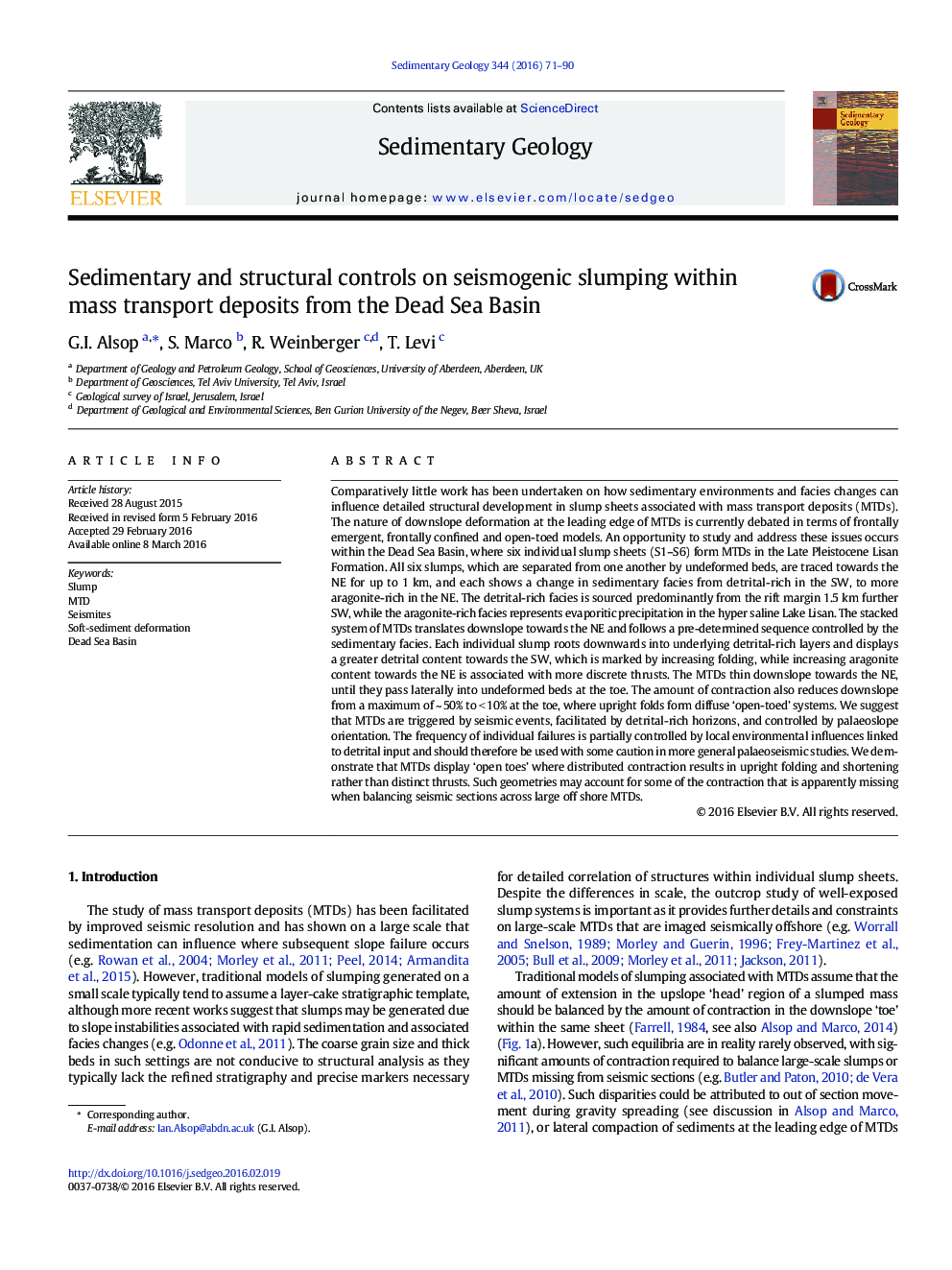| Article ID | Journal | Published Year | Pages | File Type |
|---|---|---|---|---|
| 4688950 | Sedimentary Geology | 2016 | 20 Pages |
•Gravity-driven seismogenic slumps develop in MTDs around the Dead Sea Basin.•Structural styles within slumps are controlled by the influx of detritals from wadi flood events.•Detritals facilitate easy slip and slumping during potentially lower magnitude earthquakes.•Slumps reworked by multiple seismic events are generally thicker and translate further downslope.•Leading edge of slump sheets are marked by diffuse open-toed deformation rather than thrusts.
Comparatively little work has been undertaken on how sedimentary environments and facies changes can influence detailed structural development in slump sheets associated with mass transport deposits (MTDs). The nature of downslope deformation at the leading edge of MTDs is currently debated in terms of frontally emergent, frontally confined and open-toed models. An opportunity to study and address these issues occurs within the Dead Sea Basin, where six individual slump sheets (S1–S6) form MTDs in the Late Pleistocene Lisan Formation. All six slumps, which are separated from one another by undeformed beds, are traced towards the NE for up to 1 km, and each shows a change in sedimentary facies from detrital-rich in the SW, to more aragonite-rich in the NE. The detrital-rich facies is sourced predominantly from the rift margin 1.5 km further SW, while the aragonite-rich facies represents evaporitic precipitation in the hyper saline Lake Lisan. The stacked system of MTDs translates downslope towards the NE and follows a pre-determined sequence controlled by the sedimentary facies. Each individual slump roots downwards into underlying detrital-rich layers and displays a greater detrital content towards the SW, which is marked by increasing folding, while increasing aragonite content towards the NE is associated with more discrete thrusts. The MTDs thin downslope towards the NE, until they pass laterally into undeformed beds at the toe. The amount of contraction also reduces downslope from a maximum of ~ 50% to < 10% at the toe, where upright folds form diffuse ‘open-toed’ systems. We suggest that MTDs are triggered by seismic events, facilitated by detrital-rich horizons, and controlled by palaeoslope orientation. The frequency of individual failures is partially controlled by local environmental influences linked to detrital input and should therefore be used with some caution in more general palaeoseismic studies. We demonstrate that MTDs display ‘open toes’ where distributed contraction results in upright folding and shortening rather than distinct thrusts. Such geometries may account for some of the contraction that is apparently missing when balancing seismic sections across large off shore MTDs.
Graphical abstractFigure optionsDownload full-size imageDownload high-quality image (878 K)Download as PowerPoint slide
